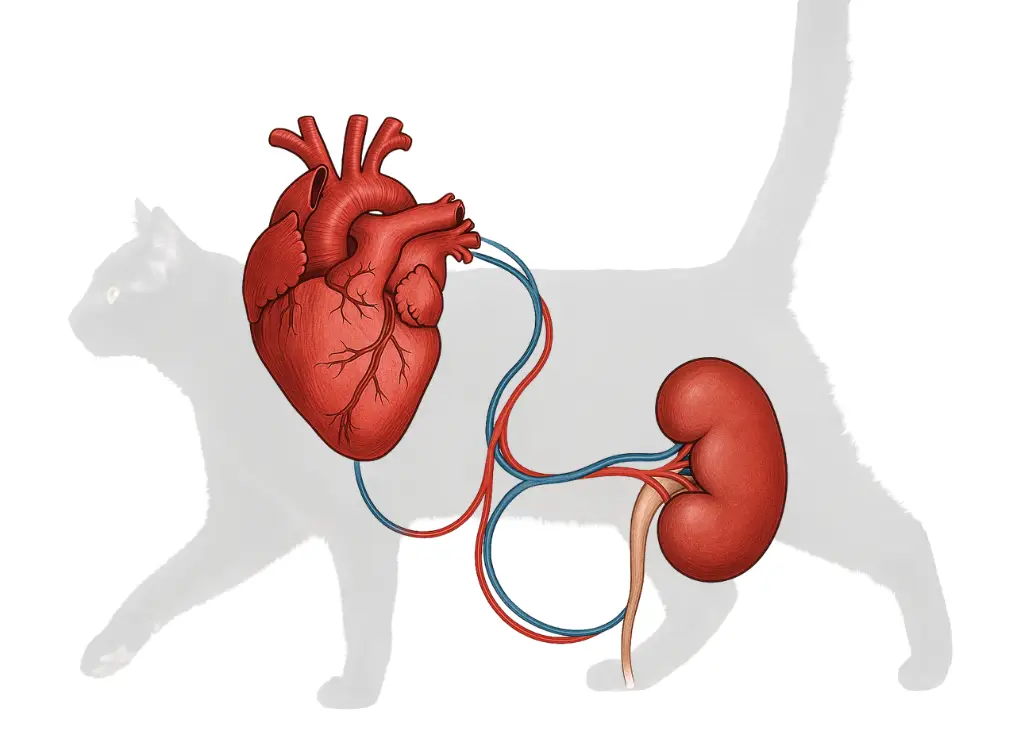Introduction
Cats are beloved companions, but as they age, they face significant risks of chronic kidney disease (CKD) and heart disease, particularly hypertrophic cardiomyopathy (HCM). These conditions are interconnected, driven by unmitigated progressive vascular damage, a mechanism also seen in human cardio-renal syndrome (CRS), as noted in research by Dr. Jonathan Himmelfarb. With CKD affecting 1-3% of all cats, 40% of cats over 10 years, and 80% of cats over 15 years, and heart disease impacting 15% of cats, at least 50% of senior cats are at risk. This article explores the kidney-heart link in cats, compares it to human CRS, and highlights Bloom Bioscience’s Revitalize Hydration and Revitalize Health & Immunity capsules as a comprehensive duo for supporting feline cardio-renal health.
The Kidney-Heart Link in Cats
CKD and heart disease in cats form a vicious cycle, mirroring human CRS where one organ’s dysfunction exacerbates the other. The primary driver is progressive vascular damage, characterized by endothelial dysfunction, inflammation, and increased blood viscosity (“sludge blood”). Key mechanisms include:
- Hemodynamic Cross-Talk: HCM reduces cardiac output, impairing renal perfusion, similar to human CRS Type 2. CKD-induced hypertension strains the heart, akin to CRS Type 4.
- Vascular Damage: CKD increases blood viscosity and uremic toxins (e.g., asymmetric dimethylarginine [ADMA]), promoting clot formation and arterial thromboembolism (ATE). Dr. Himmelfarb’s research on uremic toxins in humans highlights similar vascular stiffness and cardiovascular risks (Charytan, Himmelfarb, et al., 2014).
- Inflammation and Neurohormonal Activation: CKD activates the renin-angiotensin-aldosterone system (RAAS), causing vasoconstriction and fibrosis in both species.
- Electrolyte Imbalances: Hypokalemia from CKD impairs cardiac function, increasing arrhythmia risk.
Mechanisms of Disease Interaction
Chronic Kidney Disease (CKD)
CKD, affecting 1-3% of all cats, 40% over 10 years, and 80% over 15 years, involves progressive kidney function loss, leading to uremia, hypertension, and electrolyte imbalances. It increases blood viscosity, raising ATE risk, and hypertension strains the heart, contributing to HCM. Uremic toxins likely drive vascular damage, as seen in human CKD.
Hypertrophic Cardiomyopathy (HCM)
HCM, affecting 15% of cats (1 in 7), thickens heart muscle, reducing cardiac output and impairing renal perfusion. It predisposes cats to ATE due to blood stasis, mirroring human CRS Type 2.
Arterial Thromboembolism (ATE)
ATE occurs in 0.3-0.6% of cats but rises to 11.3% in those with HCM. Increased blood viscosity from CKD and stasis from HCM trigger clots, causing severe complications. This parallels human CKD-related thrombosis.
Prevalence of Kidney and Heart Diseases in Cats
The prevalence is significant:
- CKD: 1-3% of all cats, 40% over 10 years, 80% over 15 years.
- Heart Disease: 15% of cats, 20% over 10 years, with 1 in 7 at risk for HCM.
- Co-Prevalence: At least 50% of cats over 10 years have CKD, heart disease, or both.
- ATE: 0.3-0.6% overall, up to 11.3% in HCM cats.
Prevalence of CKD and Heart Disease in Cats:
Caption: The high co-prevalence in cats over 10 years (≥50%) mirrors human CRS, emphasizing the need for prevention (KDIGO, 2024; AHA, 2023).
Co-Prevalence of CKD and Heart Disease in Cats and Humans: 
Commonalities and Risk Factors
Shared risk factors include:
- Age: Prevalence increases with age.
- Systemic Hypertension: Common in CKD, straining the heart.
- Electrolyte Imbalances: Hypokalemia affects cardiac function.
- Vascular Changes: CKD increases clot risk.
- Comorbidities: CKD and heart disease amplify each other.
Comprehensive Support with Revitalize Products
Preventing the kidney-heart link requires addressing both organs holistically. Bloom Bioscience’s Revitalize Hydration, a mixable powder, supports:
- Potassium Citrate: Corrects hypokalemia and prevents kidney stones.
- Taurine: Supports heart function and prevents HCM.
- Hydration: Reduces blood viscosity, lowering ATE risk.
As a secondary treatment, Revitalize Health & Immunity capsules contain a proprietary blend of 14 natural ingredients, including Nattokinase, Quercetin, Resveratrol, and Taurine, designed to repair and nourish the vascular lining. These ingredients reduce inflammation, protect against oxidative stress, and support vascular integrity, addressing the root cause of vascular damage in CKD and heart disease. Together, Revitalize Hydration (preventing clotting and ensuring fluidity) and Revitalize Health & Immunity (repairing vascular damage) form an ultimate duo for feline cardio-renal health.
| Preventative Measure | Cats (Revitalize Products) | Humans (CKD-CVD Management) |
| Hydration | Revitalize Hydration | Fluid management, diuretics |
| Vascular Repair | Revitalize Health & Immunity | Antioxidants, anti-inflammatories |
| Electrolyte Balance | Potassium citrate | Potassium supplementation |
| Cardiac Support | Taurine | Beta-blockers, RAAS inhibitors |
| Blood Pressure Control | Hydration, Potassium Citrate | RAAS inhibitors, SGLT2 inhibitors |
The Sheer Number of Cats at Risk
Millions of cats are affected:
- CKD: 1-3% of all cats, 40% over 10 years, 80% over 15 years.
- Heart Disease: 15% of cats, 20% over 10 years.
- ATE: 0.3-0.6% overall, 11.3% in HCM cats.
- Combined Risk: ≥50% of cats over 10 years.
Conclusion
The kidney-heart link in cats, driven by progressive vascular damage, parallels human CRS. Revitalize Hydration and Revitalize Health & Immunity offer a comprehensive approach by addressing fluidity, clotting prevention, and vascular repair. Pet owners should consult veterinarians about these products and regular screenings for senior cats. Further research is needed to validate their efficacy, but their ingredients and testimonials align with evidence-based strategies. Act now to protect your cat’s cardio-renal health.
References:
- Charytan, D., Himmelfarb, J., et al. (2014). “Uremic toxins and cardiovascular disease in CKD.” Journal of the American Society of Nephrology.
- KDIGO. (2024). Global CKD Prevalence Report.
- AHA. (2023). Cardiovascular Disease in CKD Patients.
- Marino, C. L., Lascelles, B. D. X., Vaden, S. L., Gruen, M. E., & Marks, S. L. (2013). Prevalence and classification of chronic kidney disease in cats randomly selected from four age groups and in cats recruited for degenerative joint disease studies. Journal of Feline Medicine and Surgery, 16(6), 465–472.
- Veterinary Practice News. (n.d.). Managing Concurrent Kidney And Heart Disease.
- Today’s Veterinary Practice. (n.d.). Feline Arterial Thromboembolism.
- Cornell University College of Veterinary Medicine. (2025, January). Chronic Kidney Disease.
- CVCA. (n.d.). Heart Disease in Cats.
- PetMD. (n.d.). Hypertrophic Cardiomyopathy (HCM) in Cats.
- Moses, I. A., Hallowell, T. C., & Johnson, J. A. (2024). Feline aortic thromboembolism with and without congestive heart failure did not exhibit hypercoagulability using a novel viscoelastic coagulation monitor. American Journal of Veterinary Research, 85(8).
- Reynolds, B. S., & Lefebvre, H. P. (2013). Feline CKD: Pathophysiology and risk factors — what do we know? Journal of Feline Medicine and Surgery, 15(1_suppl), 3–16.
- Best Friends Veterinary Center. (n.d.). CKD-Early Kidney Disease in Cats.
- Bloom Bioscience. (n.d.). Revitalize Health & Immunity. Retrieved from https://bloombioscience.com/products/revitalize-health-immunity




